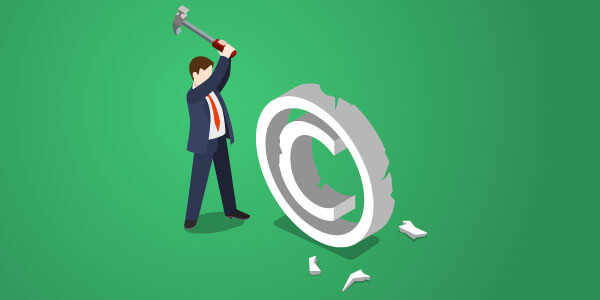
We've been thinking recently about the strong link between intellectual property rights and professional indemnity insurance.
That's because although most professional indemnity policies cover accusations of intellectual property (IP) theft against you, they don't cover all IP rights breaches.
As a starting point, it's important to have an understanding of the four different types of intellectual property rights. That way you're better prepared to avoid breaching them and landing yourself in a legal battle.
Plus, it’s always good to know how you can help protect your work against IP theft too.
1. Patents
A patent is a right that protects new inventions. It stops anyone else using the new thing without the inventor’s permission.
Let’s get this one out of the way first: all UK professional indemnity policies exclude breach of patent. If you use patented material without the owner's permission, and they sue you, your professional indemnity insurance can't help you – you'll need a patent attorney or solicitor. Sorry about that.
There are certain conditions relating to what can be patent protected. The invention must be totally new, and have an inventive step that isn't obvious to anyone with knowledge in that field.
If somebody uses/nicks your patented work without permission, you can take legal action against them. Heads up: it won't be cheap (although you *should* get your costs back if you win).
2. Copyright
Some good news now: your professional indemnity insurance covers breach of copyright claims against you. Phew.
All original work is copyrighted, including written work, visual art, photography, and performance works.
Unlike some other IP rights, copyright is automatic. As soon as a piece of work exists, the creator owns the rights to it. If they want to, the creator can allow other people to use their work by licensing it under Creative Commons.
Using material that doesn't have a Creative Commons licence is most likely a copyright infringement and you're taking a risk. In all probability, the owner will ask you first to stop using their content. But if you don't, they're entitled to take legal action against you. And vice versa.
3. Design rights
Registering a design is the best way to protect it. That way, you get exclusive rights for 25 years.
A design right provides legal protection for unregistered UK designs. It offers some protection, but it's not as comprehensive as registering a design.
For example, design rights give the creator automatic protection "for the internal or external shape or configuration of an original design, ie its three-dimensional shape".
But design rights don't protect 2D parts of the design, such as patterns or detail. Design rights also offer a shorter period of protection than registering a design.
4. Trademarks
A trademark, or brand, is a way of differentiating your goods or services from somebody else's. This could be a logo, or a phrase, or your trading name.
Trademarks are not automatically protected – you must register yours to get the exclusive rights to it. Registering your trademark gives you the right to take legal action against anyone who uses it without your permission. It's possible to do this for unregistered trademarks too but, for obvious reasons, it's much more difficult.
There are rules around what can be registered as a trademark. To be accepted for registration, a trademark must be distinctive. That's partly why many companies choose nonsense, made-up words such as Spotify, Ikea, Aviva.
Pre-existing words and names can be used, providing nobody has used them before (eg McDonald's, Sainsbury's, Rowntree's), or they're being used in an uncommon way (eg BlackBerry Mobile, Apple Inc., PolicyBee).
You can't register any word or phrase that exactly describes the product you sell, or is not unique. For example, you wouldn't be able to register any of the following: Leather Shoes, Cheap Builders, Tasty Chicken, or Unreliable Minicabs.
Original sin?
Simply put, the most effective way of avoiding a professional indemnity claim for IP theft is to make sure your work is completely original. Not always easy in this media-saturated, digital age.
If you knowingly use somebody else's work without asking, chances are they're going to be pretty miffed. At best you'll get a strongly worded letter asking you to put right whatever's wrong. At worst, you're looking at a day in court.
And your own work? Always register designs and trademarks. This makes it much easier to throw the legal book at someone using your stuff without your permission. Without doing so, it's much more of an uphill battle proving the work actually belongs to you.
For more information on IP rights, check out the Intellectual Property Office's website.
Image used under license from Shutterstock.
design and illustrationgraphic designersmanaging riskphotographersrules and regulationsrunning a business
